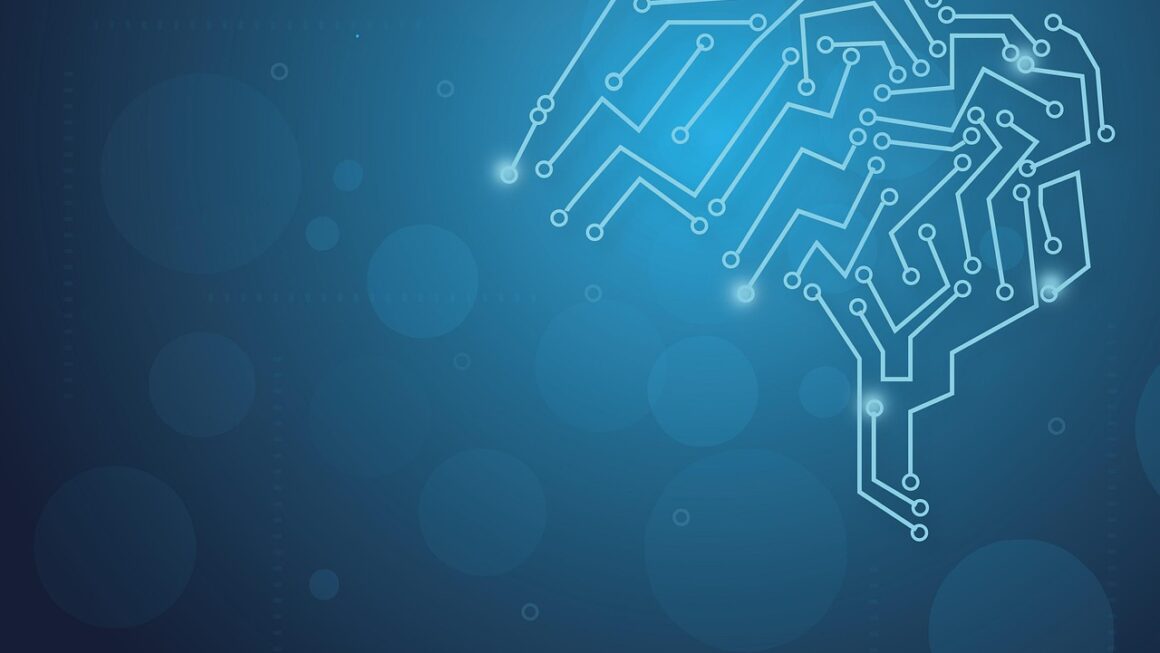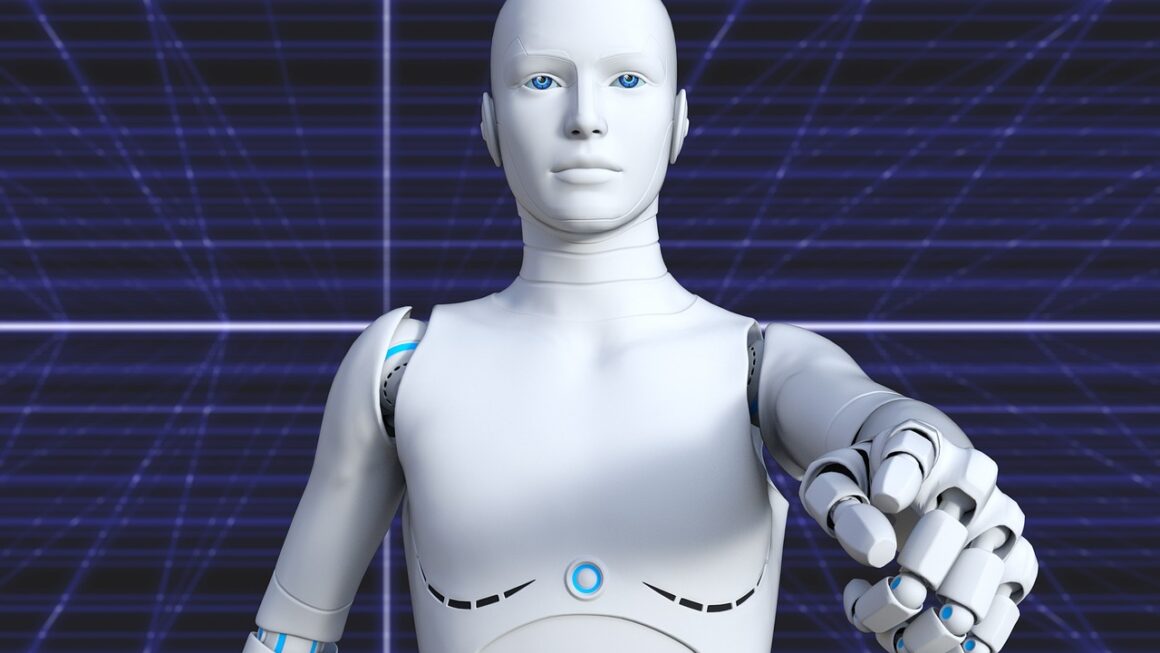Imagine a world where computers learn from data without explicit programming, making accurate predictions and driving automation across various industries. That world is here, powered by machine learning, a revolutionary field of artificial intelligence that’s reshaping how we live and work. This blog post will delve into the core concepts of machine learning, exploring its diverse applications, key algorithms, and the exciting future it promises.
What is Machine Learning?
Defining Machine Learning
Machine learning (ML) is a subset of artificial intelligence (AI) that focuses on enabling computers to learn from data and make predictions or decisions without being explicitly programmed. Instead of relying on hard-coded rules, ML algorithms identify patterns in data and use those patterns to develop models that can generalize to new, unseen data. This learning process allows systems to improve their performance over time with more data exposure.
Key Differences: Traditional Programming vs. Machine Learning
Traditional programming involves writing explicit instructions for a computer to follow. In contrast, machine learning allows the computer to learn the instructions itself. Here’s a simple breakdown:
- Traditional Programming:
Input: Data + Program (Rules)
Output: Results
- Machine Learning:
Input: Data + Results
Output: Program (Model)
Benefits of Machine Learning
- Automation: Automates tasks that were previously performed manually, increasing efficiency and reducing errors.
- Data-Driven Decisions: Provides insights from large datasets, enabling better-informed decisions.
- Personalization: Creates personalized experiences for users based on their preferences and behaviors.
- Predictive Analysis: Predicts future trends and outcomes, enabling proactive strategies.
- Scalability: Easily adapts to increasing data volumes and user demands.
Types of Machine Learning
Machine learning algorithms can be broadly categorized into three main types, based on the learning style and the type of data used.
Supervised Learning
Supervised learning involves training a model on labeled data, where the correct output (label) is provided for each input. The goal is for the model to learn the mapping between inputs and outputs so that it can accurately predict the output for new, unseen inputs.
- Examples:
Classification: Predicting a categorical label (e.g., spam or not spam).
Regression: Predicting a continuous value (e.g., house price).
- Common Algorithms: Linear Regression, Logistic Regression, Support Vector Machines (SVMs), Decision Trees, Random Forests, Naive Bayes.
- Practical Application: In healthcare, supervised learning can be used to predict disease diagnoses based on patient symptoms and medical history.
Unsupervised Learning
Unsupervised learning deals with unlabeled data, where the model must discover patterns and structures on its own without any predefined output.
- Examples:
Clustering: Grouping similar data points together (e.g., customer segmentation).
Dimensionality Reduction: Reducing the number of variables while preserving important information.
Anomaly Detection: Identifying unusual or outlier data points.
- Common Algorithms: K-Means Clustering, Hierarchical Clustering, Principal Component Analysis (PCA), Association Rule Mining.
- Practical Application: In e-commerce, unsupervised learning can be used to segment customers based on their purchasing behavior to target them with personalized marketing campaigns.
Reinforcement Learning
Reinforcement learning involves training an agent to make decisions in an environment to maximize a reward signal. The agent learns through trial and error, receiving feedback in the form of rewards or penalties for its actions.
- Key Concepts:
Agent: The learner making decisions.
Environment: The context in which the agent operates.
Action: A choice made by the agent.
* Reward: A signal indicating the desirability of an action.
- Common Algorithms: Q-Learning, Deep Q-Networks (DQN), Policy Gradient Methods.
- Practical Application: In robotics, reinforcement learning can be used to train robots to perform complex tasks, such as navigating a warehouse or assembling products.
Machine Learning Algorithms: A Closer Look
Several algorithms form the backbone of machine learning applications. Understanding these algorithms is crucial for anyone looking to implement ML solutions.
Linear Regression
- Description: Used for predicting a continuous target variable based on a linear relationship with one or more input variables.
- Application: Predicting house prices based on features like size, location, and number of bedrooms.
- Pros: Simple to implement and interpret.
- Cons: Assumes a linear relationship, which may not always hold true.
Logistic Regression
- Description: Used for binary classification problems, where the goal is to predict one of two possible outcomes.
- Application: Predicting whether a customer will click on an ad or not.
- Pros: Provides probabilities of belonging to each class.
- Cons: Can struggle with complex non-linear relationships.
Decision Trees
- Description: Tree-like structures that make decisions based on a series of if-else conditions.
- Application: Diagnosing diseases based on patient symptoms.
- Pros: Easy to understand and visualize.
- Cons: Prone to overfitting if not properly pruned.
Random Forests
- Description: An ensemble learning method that combines multiple decision trees to improve accuracy and reduce overfitting.
- Application: Image classification and object detection.
- Pros: Highly accurate and robust.
- Cons: Can be computationally expensive to train.
Support Vector Machines (SVMs)
- Description: Finds the optimal hyperplane that separates data points into different classes.
- Application: Text classification and spam detection.
- Pros: Effective in high-dimensional spaces.
- Cons: Can be sensitive to parameter tuning.
K-Means Clustering
- Description: An unsupervised learning algorithm that groups data points into K clusters based on their similarity.
- Application: Customer segmentation and anomaly detection.
- Pros: Simple and efficient.
- Cons: Requires specifying the number of clusters (K) in advance.
Applications of Machine Learning
Machine learning has a wide range of applications across various industries, transforming how businesses operate and providing innovative solutions to complex problems.
Healthcare
- Diagnosis and Treatment: ML algorithms can analyze medical images to detect diseases like cancer, predict patient outcomes, and personalize treatment plans.
- Drug Discovery: ML can accelerate the drug discovery process by identifying potential drug candidates and predicting their effectiveness.
- Remote Patient Monitoring: ML-powered wearable devices can monitor patients’ vital signs and alert healthcare providers to potential health issues.
Finance
- Fraud Detection: ML can identify fraudulent transactions in real-time, preventing financial losses.
- Risk Management: ML can assess credit risk, predict market trends, and optimize investment portfolios.
- Algorithmic Trading: ML algorithms can execute trades automatically based on predefined rules and market conditions.
Retail
- Personalized Recommendations: ML can recommend products and services to customers based on their browsing history and purchasing behavior.
- Demand Forecasting: ML can predict future demand for products, allowing retailers to optimize inventory levels.
- Customer Segmentation: ML can segment customers into different groups based on their demographics, behavior, and preferences.
Manufacturing
- Predictive Maintenance: ML can predict when equipment is likely to fail, allowing manufacturers to perform maintenance proactively and minimize downtime.
- Quality Control: ML can detect defects in products during the manufacturing process, improving product quality and reducing waste.
- Process Optimization: ML can optimize manufacturing processes, increasing efficiency and reducing costs.
Transportation
- Autonomous Vehicles: ML is the core technology behind self-driving cars, enabling them to perceive their environment and make decisions.
- Traffic Management: ML can optimize traffic flow and reduce congestion by predicting traffic patterns and adjusting traffic signals.
- Logistics Optimization: ML can optimize delivery routes and schedules, reducing transportation costs and improving delivery times.
Ethical Considerations in Machine Learning
As machine learning becomes increasingly prevalent, it’s crucial to address the ethical considerations associated with its use.
Bias and Fairness
- Problem: ML models can inherit biases from the data they are trained on, leading to unfair or discriminatory outcomes.
- Solution: Carefully curate training data to ensure it is representative of all populations and use fairness-aware algorithms that mitigate bias.
Transparency and Explainability
- Problem: Some ML models, such as deep neural networks, can be difficult to interpret, making it challenging to understand why they make certain predictions.
- Solution: Use explainable AI (XAI) techniques to understand the reasoning behind model predictions and ensure transparency in decision-making.
Privacy and Security
- Problem: ML models can be vulnerable to privacy breaches if they are trained on sensitive data without proper safeguards.
- Solution: Anonymize and encrypt data, use differential privacy techniques, and implement robust security measures to protect against unauthorized access.
Accountability and Responsibility
- Problem: Determining who is responsible when an ML model makes a mistake can be challenging.
- Solution: Establish clear lines of accountability and responsibility for the development, deployment, and monitoring of ML models.
Conclusion
Machine learning is a transformative technology with the potential to revolutionize numerous industries and improve our lives in countless ways. By understanding the fundamental concepts, algorithms, and ethical considerations, you can harness the power of machine learning to solve complex problems and create innovative solutions. The future of machine learning is bright, and by embracing its capabilities responsibly, we can unlock its full potential to build a better world.




